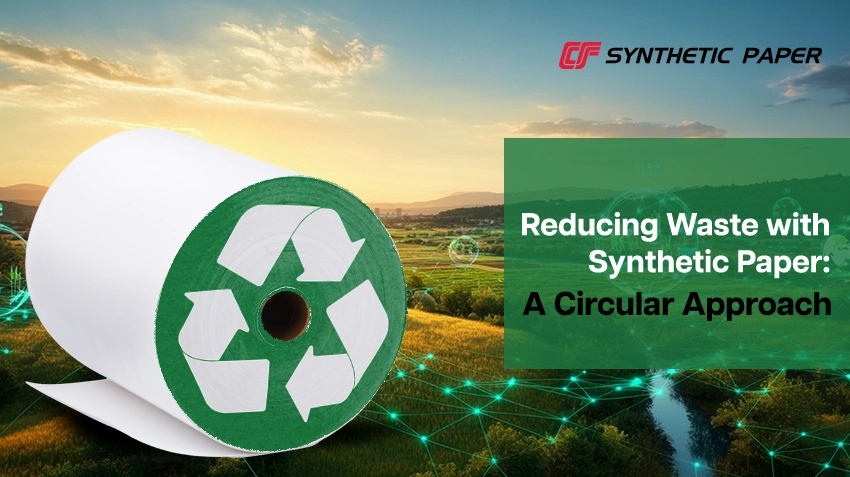
How Synthetic Paper Supports the Circular Economy Model
The circular economy is not just a trend, but it represents a shift in how resource management is perceived. This approach emphasizes sustainability, waste elimination, and the continuous use of resources. At the forefront of this movement is an innovative material - synthetic paper.
We all know what synthetic paper is and the benefits it offers, let's take a look at how this non-tearable paper fuels the circular economy.
- No More Frequent Replacements
Synthetic paper is tear resistant Paper, waterproof Paper, and highly durable, making it an ideal choice for applications where longevity is essential. It does not degrade easily even when exposed to moisture or rough handling and remains intact for extended periods. This durability of synthetic paper reduces the need for frequent replacements, lowering material consumption and minimizing waste generation.
Applications that benefit from high tear resistance paper's durability:
a) Outdoor signage and banners
b) Labels and tags for industrial use
c) Reusable maps, manuals, and ID cards
By extending product life cycles, synthetic paper helps businesses reduce resource consumption and landfill waste.
- Recyclable Nature
Synthetic paper can be recycled with minimal energy input. It is an easily recyclable material compared to laminated or composite materials.
Key benefits of synthetic paper’s recyclability:
a) Can be reprocessed into new synthetic paper products
b) Reduces dependence on raw materials
c) Lowers carbon emission
Manufacturers can participate in closed-loop recycling systems to ensure synthetic paper waste is efficiently recovered and repurposed.
- Efficient Use of Resources
Synthetic paper production minimizes the need for natural resources by utilizing plastic resins derived from recyclable and reusable polymers.
Environmental benefits of synthetic paper production include:
a) No trees are cut down, preserving natural forests.
b) Its manufacturing does not require excessive water usage.
c) The manufacturing process of synthetic paper generates lower greenhouse gas emissions compared to pulp-based paper processing.
By optimizing resource use, this water-resistant paper contributes to a more sustainable manufacturing process aligned with circular economy principles.
- Reducing Single-Use Waste
The synthetic paper's robustness allows it to be reused multiple times before been recycled, which makes it an excellent alternative for reusable applications.
Examples of reusable applications:
- Dry-erase boards and reusable notebooks
- Waterproof menus and restaurant materials
- Durable packaging solutions for repeated use
Encouraging reusable both side coated paper products help industries reduce dependency on disposable materials and promote sustainable consumption habits.
To Sum Up,
Synthetic paper is a force driving the circular economy toward sustainable practices. Its exceptional features - durability, recyclability, and continuous innovations make it a cornerstone for reducing environmental impact and enhancing resource efficiency. As businesses prioritize sustainable practices, synthetic paper has been and will be building a more resilient circular economy.
Embracing synthetic paper is a vital move towards reimagining material use and nurturing a sustainable future. Let's champion synthetic paper as a key player in our collective journey towards sustainability. Connect with us, a non-tearable paper manufacturer, to meet your synthetic paper requirements.